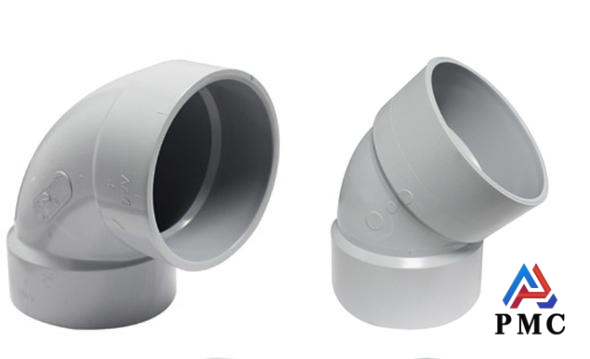
Introduction of Elbow Fittings: Types, Characteristics and Applications
What are elbow fittings?
Elbow fittings are key connectors used to change the direction of pipes in the pipeline system. In all kinds of scenarios involving pipeline laying, from household water and electricity pipes to industrial pipes in large factories, elbow fittings play an indispensable role. Without elbow fittings, the pipe can only be laid in a straight line, and it is impossible to turn when encountering a place that needs to be turned. For example, when decorating a home, the water pipes in the kitchen and bathroom need to pass through walls and around beams in different directions. At this time, the elbow fittings can allow the water pipes to flexibly change direction, achieve precise line layout, and meet the installation requirements of water-using equipment.
Types of elbow fittings
There are various types of elbow fittings, the most common ones are 90 degree elbows and 45 degree elbows. The 90-degree elbow can achieve a right-angle change in the direction of the pipe. It can often be seen in the water and electricity pipes in home decoration, such as turning the horizontal water pipe to the vertical direction to connect to the faucet or other water-using equipment. The 45 degree elbow is suitable for situations where a smaller angle of turn is required.
In addition to elbows of common angles, there are also special U-shaped and S-shaped elbows. The U-shaped elbow is in the shape of a "U" and is mainly used in scenarios where the pipe needs to be turned back. For example, in chemical equipment, in order to make full use of the space and allow the fluid to circulate multiple times in a small area, a U-shaped elbow is used. The S-shaped elbow is similar in shape to the letter "S" and is widely used in drainage systems. Because it can store water at the elbow, it uses the water seal principle to effectively block odors and harmful gases in the sewer from entering the room, thereby ensuring indoor air quality.

Features of elbow fittings
1. It has a small bending radius and can easily realize pipe turning in places with limited space without taking up too much space. Elbows with small bending radius can be installed flexibly to ensure the reasonable direction of the pipeline.
2. Elbow fittings are easy to install. Quick elbows use threaded connections, ferrule connections or crimping, etc., without the need for complicated welding procedures, greatly shortening installation time and reducing labor costs.
3. Elbow fittings are made of various materials, the most common ones are carbon steel elbows, stainless steel elbows, alloy steel elbows and ceramics elbows, each material has unique properties.
Main applications of elbow fittings
1. In plumbing installation, it is the key to building water supply and drainage systems in homes and buildings. Through elbows at different angles, water pipes can accurately connect various water-using appliances, such as kitchen sinks, toilets and shower heads in bathrooms, to ensure smooth water flow and meet daily water needs.
2. In the field of liquid transportation, such as petroleum, chemical and other industries, elbow fittings allow the flexible layout of pipelines for various liquid raw materials and finished products, connecting storage tanks, reactors, delivery pumps and other equipment to ensure the stable transmission of liquids in the production process.
3. In municipal engineering, elbow fittings are indispensable in the city's water supply, drainage and gas pipeline systems. Water supply pipes use elbows to transport water to various areas of the city to ensure water supply for residents and businesses; drainage pipes use elbows to guide sewage into sewage treatment plants; gas pipelines use elbows to transport gas to thousands of households, providing energy for residents' lives and industrial production.
4. In terms of gas transportation, the steam pipes in power plants, the ventilation pipes in factories and the natural gas transmission pipelines are inseparable from elbow accessories. In power plants, steam passes through pipes with elbows to drive turbines to generate electricity; the factory's ventilation system relies on elbows to bring fresh air into the workshop and exhaust exhaust gas; natural gas pipelines use elbows to transport natural gas to every corner of the city to meet the gas needs of residents and businesses.
Read more: Types of Elbow Fittings in Piping


